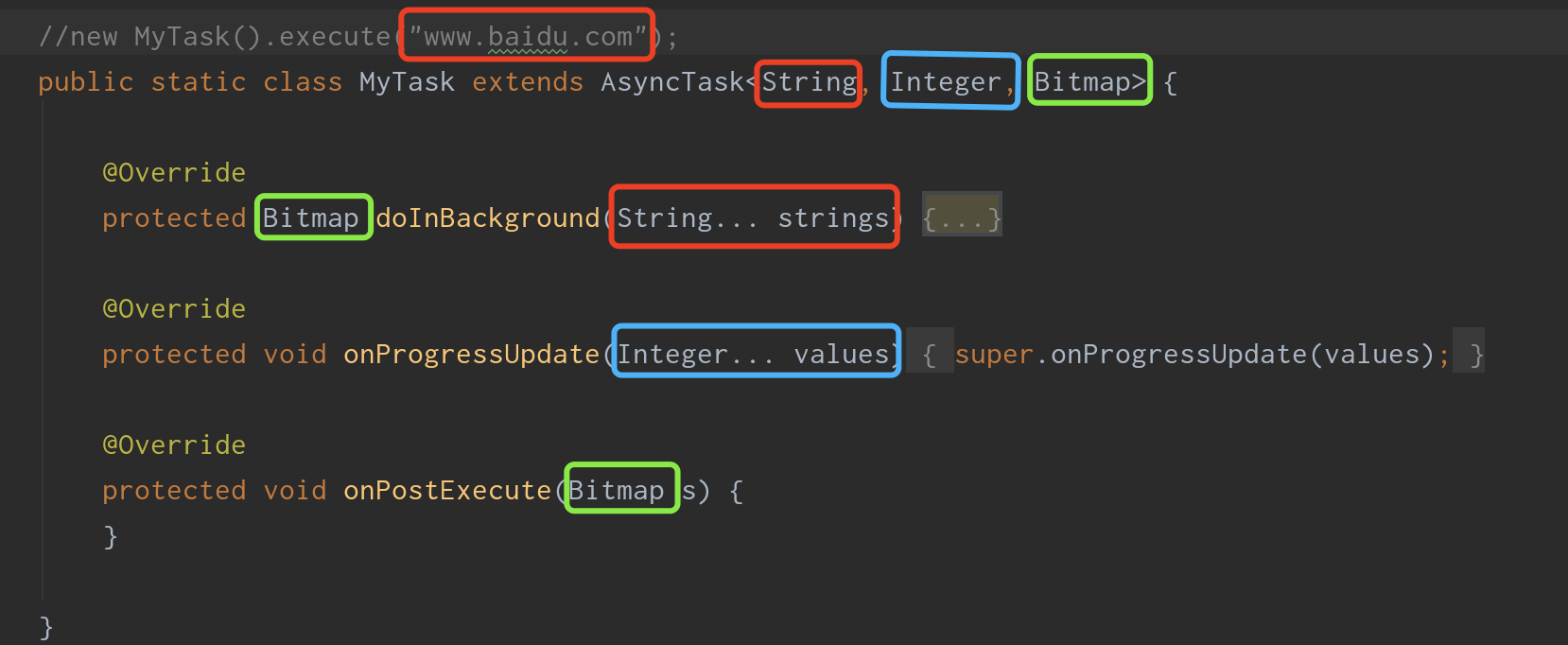2020杭电多校第八场
- 作者: 火火火火火火火火火火火火
- 来源: 51数据库
- 2021-09-21
- 1003 Clockwise or Counterclockwise
签到,向量叉积
题意:
给你三个点a,b,c,按照a,b,c的顺序连出一个圆,现在问你是顺时针画的圆还是逆时针画的圆。
思路:
判断c是不是在ab的右边就行,在右边就是顺时针,左边就只逆时针。
可以用向量ac叉积ab判断,如果大于0就是顺时针,如果小于0就是逆时针。
#include <bits/stdc++.h>
using namespace std;
int tc,x1,yo,x2,y2,x3,y3;
const double eps = 1e-8;
int sgn(double x) {
if (fabs(x) < eps) return 0;
if (x < 0) return -1;
else return 1;
}
struct Point {
double x, y;
Point() {}
Point(double _x, double _y) {
x = _x;
y = _y;
}
void input() {
scanf("%lf%lf", &x, &y);
}
void output() {
printf("%.8f%.8f\n", x, y);
}
bool operator == (Point b) const {
return sgn(x - b.x) == 0 && sgn(y - b.y) == 0;
}
bool operator < (Point b) const {
return sgn(x - b.x) == 0 ? sgn(y - b.y) < 0 : x < b.x;
}
Point operator - (const Point &b) const {
return Point(x - b.x, y - b.y);
}
//点积
double operator * (const Point &b) const {
return x * b.x + y * b.y;
}
//叉积
double operator ^ (const Point &b) const {
return x * b.y - y * b.x;
}
}a,b,c;
int main() {
ios::sync_with_stdio(false);cin.tie(0);cout.precision(10);cout << fixed;
#ifdef LOCAL_DEFINE
freopen("input.txt", "r", stdin);
#endif
cin>>tc;
while(tc--){
cin>>x1>>yo>>x2>>y2>>x3>>y3;
a=Point(x1,yo);
b=Point(x2,y2);
c=Point(x3,y3);
Point x,y;
x=b-a;
y=c-a;
double res=y^x;
if(sgn(res)==1) cout<<"Clockwise"<<'\n';
else cout<<"Counterclockwise"<<'\n';
}
#ifdef LOCAL_DEFINE
cerr << "Time elapsed: " << 1.0 * clock() / CLOCKS_PER_SEC << " s.\n";
#endif
return 0;
}
- 1006 Fluctuation Limit
签到,思维
题意:
给你n个区间,你现在要从第一个区间的某个点开始走,走遍n个区间,每次要走在n个区间内部,每次最多走[-k,+k]这个gap,现在问你能不能有一种走法满足,没有的话输出-1,有的话输出每次在的点。
思路:
先从后往前维护一下合法的区间,l取个max,r取个min,夹出来的那个区间就是合法区间,然后瞎搞就行,接下来的思路有点像没有问题我就不动,有了问题我再去动这种感觉。
#include <bits/stdc++.h>
using namespace std;
const int maxn=(int)1e5+100;
int tc, n, k;
struct node{
int l,r;
}nd[maxn];
int main() {
ios::sync_with_stdio(false);cin.tie(0);cout.precision(10);cout << fixed;
#ifdef LOCAL_DEFINE
freopen("input.txt", "r", stdin);
#endif
cin>>tc;
while(tc--){
cin>>n>>k;
for(int i=1; i<=n; ++i) cin>>nd[i].l>>nd[i].r;
bool ok=true;
for(int i=n-1; i>=1; --i){
int tl=nd[i+1].l-k;
int tr=nd[i+1].r+k;
if(tl>nd[i].r || tr<nd[i].l) {
ok=false;
break;
}
nd[i].l=max(tl, nd[i].l);
nd[i].r=min(tr, nd[i].r);
}
if(!ok) cout<<"NO"<<'\n';
else{
cout<<"YES"<<'\n';
int now=nd[1].l;
cout<<now<<' ';
for(int i=2; i<=n; ++i){
if(now<nd[i].l){
now=nd[i].l;
} else if(now>nd[i].r){
now=nd[i].r;
}
cout<<now<<' ';
}cout<<'\n';
}
}
#ifdef LOCAL_DEFINE
cerr << "Time elapsed: " << 1.0 * clock() / CLOCKS_PER_SEC << " s.\n";
#endif
return 0;
}
- 1008 Hexagon
构造,思维,分治
题意:
有一个半径为n的六边形块,现在让你用最多更换方向次数的走法,走遍这整个块,起点可以在任意点,输出走的每步的方向。
思路:
瞎搞以后发现可以从左上角开始,先走一个2,然后分别走<3,1><4,2><5,3><6,4><1,5>直到不能再走<2,6>,然后再走个3,这时候我们就可以发现我们把外面的两圈都方向不同地走完了,然后进入了内部的左上角,重复一样的操作就行了,分治的思想从n的问题转换为n-2的问题,所以先预处理一下n=2和n=3的时候,然后瞎搞就行。
#include <bits/stdc++.h>
using namespace std;
int tc,n;
vector<int> G[1000];
int main() {
ios::sync_with_stdio(false);cin.tie(0);cout.precision(10);cout << fixed;
#ifdef LOCAL_DEFINE
freopen("input.txt", "r", stdin);
#endif
G[2].emplace_back(2);
G[2].emplace_back(3);
G[2].emplace_back(4);
G[2].emplace_back(5);
G[2].emplace_back(6);
G[2].emplace_back(2);
G[3].emplace_back(2);
G[3].emplace_back(3);
G[3].emplace_back(1);
G[3].emplace_back(3);
G[3].emplace_back(4);
G[3].emplace_back(2);
G[3].emplace_back(4);
G[3].emplace_back(5);
G[3].emplace_back(3);
G[3].emplace_back(5);
G[3].emplace_back(6);
G[3].emplace_back(4);
G[3].emplace_back(6);
G[3].emplace_back(1);
G[3].emplace_back(5);
G[3].emplace_back(1);
G[3].emplace_back(2);
G[3].emplace_back(3);
cin>>tc;
while(tc--){
int sum=0;
cin>>n;
while(n>1){
if(int(G[n].size())==0){
int tot=n-2;
G[n].emplace_back(2);
for(int i=0; i<tot; ++i) {
G[n].emplace_back(3);
G[n].emplace_back(1);
}G[n].emplace_back(3);
for(int i=0; i<tot; ++i) {
G[n].emplace_back(4);
G[n].emplace_back(2);
}G[n].emplace_back(4);
for(int i=0; i<tot; ++i) {
G[n].emplace_back(5);
G[n].emplace_back(3);
}G[n].emplace_back(5);
for(int i=0; i<tot; ++i) {
G[n].emplace_back(6);
G[n].emplace_back(4);
}G[n].emplace_back(6);
for(int i=0; i<tot; ++i) {
G[n].emplace_back(1);
G[n].emplace_back(5);
}G[n].emplace_back(1);
tot--;
for(int i=0; i<tot; ++i){
G[n].emplace_back(2);
G[n].emplace_back(6);
}
G[n].emplace_back(2);
G[n].emplace_back(3);
for(int x:G[n]) {
cout<<x;
}
} else{
for(int x:G[n]) cout<<x;
}
n-=2;
}
cout<<'\n';
}
#ifdef LOCAL_DEFINE
cerr << "Time elapsed: " << 1.0 * clock() / CLOCKS_PER_SEC << " s.\n";
#endif
return 0;
}
推荐阅读
热点文章

android中Bitmap用法(显示,保存,缩放,旋转)实例分析
12

android 仿微信聊天气泡效果实现思路
1

Android的尺度,drawable-xxxxxxx
2

Codeforces Round #656 (Div. 3) (C、D题)
1

Android之handler异步消息处理机制解析
6

GridView中图片显示出现上下间距过大,左右图片显示类似瀑布流的问题
0

AsyncTask的简单使用
5

两个简单Fragment之间的通信(三种方式)
18

uboot修改设置boot参数命令
41

android中实现从相册中一次性获取多张图片与拍照,并将选中的图片显示出来
2

